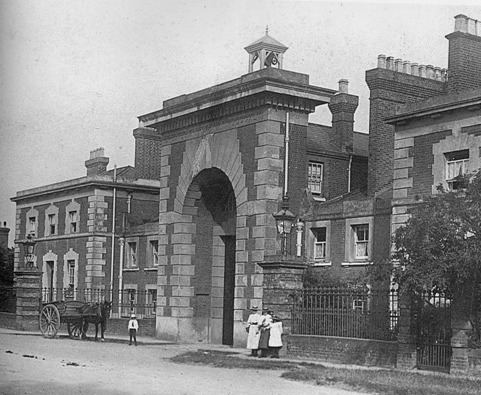Closed Currently Open Governor Andy Lattimore Opened 1805 | Managed by HM Prison Services Phone +44 1983 554000 | |
 | ||
Population 497 (as of August 2008) Website Parkhurst at justice.gov.uk Address Clissold Rd, Newport PO30 5NX, UK Security class Prisoner security categories in the United Kingdom Similar HMP Albany, St Mary's Hospital, Lakeside Park Hotel, Cowes Tandoori, Carisbroo College | ||
HMP Isle of Wight – Parkhurst Barracks is a prison situated in Parkhurst on the Isle of Wight, operated by Her Majesty's Prison Service.
Contents
Isle of Wight prisons
Parkhurst prison is one of the two prisons that make up HMP Isle of Wight, the other being Albany. Parkhurst and Albany were once amongst the few top-security prisons (called "Dispersals" because they dispersed the more troublesome prisoners rather than concentrated them all in one place) in the United Kingdom, but were downgraded in the 1990s.
Status
The downgrading of Parkhurst was preceded by a major escape: three prisoners (two murderers and a blackmailer) made their way out of the prison on 3 January 1995 to enjoy four days of freedom before being recaptured. One of them, Keith Rose, is an amateur pilot. During those four days, they were living rough in a shed in a garden in Ryde, having failed to steal a plane from the local airclub. A programme entitled Britain's Island Fortress was made about this prison escape for National Geographic Channel's Breakout documentary series.
Notoriety
Parkhurst enjoyed notoriety as one of the toughest jails in the British Isles. Many notable criminals, including the Richardson brothers, the Yorkshire Ripper Peter Sutcliffe, Kenny Carter, Moors Murderer Ian Brady, Terrance John Clark (Mr Asia Drug Syndicate), and the Kray twins, were incarcerated there.
Early history
Parkhurst began in 1778 as a military hospital and children's asylum. By 1838, it was a prison for children. 123 Parkhurst apprentices were sent to the Colony of New Zealand in 1842 and 1843, and a total of almost 1500 boys between the ages of 12 and 18 years were sent to various colonies in Australia and New Zealand. Swan River Colony (Western Australia) received 234 between 1842 and 1849, then chose to accept adult convicts as well. Victoria and Tasmania also received Parkhurst Boys, who were always referred to as "apprentices", not "convicts". Prison Governor Captain George Hall employed boys to make bricks to build the C and M block wings onto the building.
Parkhurst became a prison in 1863, holding young male prisoners. Almost from its beginnings as a prison for young offenders, Parkhurst was subject to fierce criticism by the public, politicians and in the press for its harsh regime (including the use of leg irons initially). It became a particular focus of critique for reformers campaigning against the use of imprisonment for children, most notably Mary Carpenter.
Name change
In October 2008, it was announced that the name Parkhurst could be lost, along with the two other prison names, Albany and Camp Hill. The three would become part of one large prison run by a single governor. New names for the larger single prison have been suggested as HMP Solent, HMP Mountbatten and HMP Vectis. HMP Isle of Wight was later selected as the new name for the super prison incorporating all three island prisons. in 2013 Camp Hill prison was closed.
